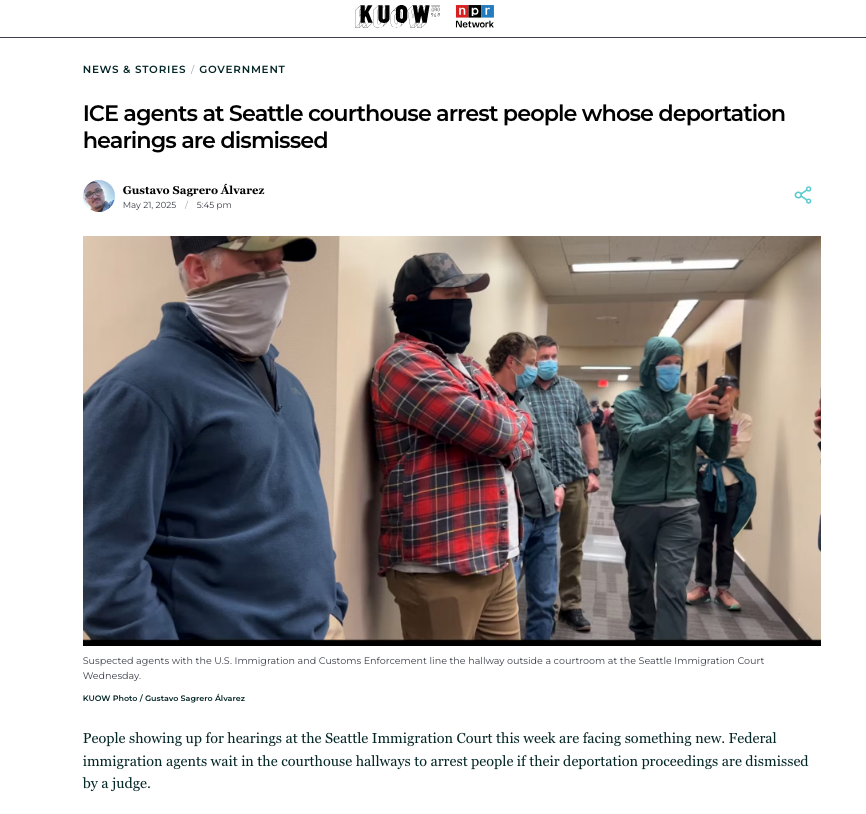Why Transparency in Immigration Enforcement Matters
- Government Accountability Project
- Sep 27
- 3 min read
Across the United States, Immigration and Customs Enforcement (ICE) officers are increasingly conducting arrests in plainclothes, often with their faces covered and without visible agency insignia.

These images—masked officers, unmarked vans, and people taken without explanation—have fueled alarm among community members and elected officials alike.
The debate over this practice isn’t simply about immigration. It raises a deeper question: how do we balance officer safety with the public’s right to transparency, accountability, and trust in law enforcement?
Public Safety Risks
When officers operate without visible identification, the public cannot easily distinguish a lawful arrest from a kidnapping. This confusion has led to 911 calls, confrontations, and risks to both officers and bystanders.
Experts in policing stress the opposite approach. For example, the Baltimore Police Department’s Non-Uniformed Policing Standards policy states: A member not in uniform and lacking immediate identification presents a risk to their individual safety, the safety of other officers, and the safety of the general public, which can infringe upon the member’s ability to carry out enforcement duties.
Accountability and Rule of Law
Masks and anonymity make it harder for courts, victims, and the public to identify officers for complaints or legal review. The New York City Bar Association has warned that concealing officers’ identities “appears to be an effort to evade accountability” and risks further erosion of the rule of law.
Federal law requires immigration officers to identify themselves “as soon as… practical and safe” (8 C.F.R. § 287.8). Yet routine masking and lack of visible insignia undermine this standard.
Risks of Impersonation
When real ICE officers operate anonymously, it creates openings for criminals to exploit public confusion. In Pennsylvania and North Carolina, individuals have impersonated ICE agents—sometimes to commit robbery or sexual assault—by using generic “POLICE/ICE” apparel and unmarked vans.
Trust and Cooperation
Effective law enforcement depends on community trust. Research shows that masked, anonymous enforcement undermines that trust, reduces reporting of crimes, and discourages witnesses from cooperating.
As the FBI Law Enforcement Bulletin notes: “Avoiding anonymity and promoting accountability are essential” for preventing escalation and sustaining public confidence.
Policy Landscape
Federal law: Officers must identify themselves during arrests (8 C.F.R. § 287.8). For civil disturbances, federal law requires agencies to display identification and affiliation (10 U.S.C. § 723).
State action: California became the first state to ban most law-enforcement masking, including federal immigration agents, with exceptions for undercover or medical reasons. Other states, including New York, Massachusetts, Pennsylvania, and Oregon, are considering similar legislation.
Local responses: Cities such as Los Angeles, Portland (ME), San José, and Chicago have moved to require visible ID or restrict ICE operations without clear insignia.
Federal proposals: Multiple bills in Congress—including the No Anonymity in Immigration Enforcement Act and the VISIBLE Act—would ban masks and require officers to display clear identification.
Attorneys General: A coalition of 21 state AGs has urged Congress to act, warning that ICE’s current practices create “impersonation risks” and erode accountability.
Visible identification is not a partisan issue. It is a basic safeguard that benefits everyone: officers, immigrants, and the broader public. Transparency builds trust, prevents impersonation, and ensures that law enforcement can do its work without undermining the very democratic values it is sworn to protect.



